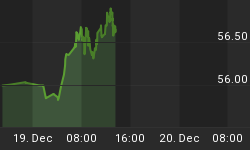The U.S. Dollar tried to mount a comeback at the mid-session but failed to sustain upside momentum and finished the day down but off the low. The Dollar was down most of the day and traders renewed interest in riskier assets on optimism that the Dubai World credit issue would resolve itself. Investors seemed tentative to pound the Dollar lower which could be an indication that problems are not over. Breaking last week's Dollar Index low at 74.27 will be an indication that global investors consider this matter to be a local issue rather than a possible international calamity.
Today's better than expected Institute for Supply Management-Chicago business index also helped hold the Dollar in check.
A rise in consumer prices helped boost the EUR USD overnight but the inability to take out the recent high for the year at 1.5144 is helping to generate new selling pressure. The main trend will turn down when 1.4801 is penetrated. The return of an appetite for a risk driven market will help the Euro maintain its upside momentum.
The GBP USD was the first currency pair to turn lower this morning after the British Pound failed to hold onto earlier gains. Pressure came from a report showing that U.K. consumer confidence unexpectedly weakened and a general feeling that the U.K. economy will continue to weaken over the short-term despite massive amounts of stimulus being pumped into the financial system. More selling pressure could hit this market if last week's bottom at 1.6292 violated. Watch for a hard acceleration down if the pair of main bottoms at 1.6261 and 1.6250 fail to hold.
Last week the USD JPY hit a 14-year low last week at 84.83. Today's action looked as if traders are adjusting to oversold conditions. The fundamentals still call for a stronger Yen as the U.S. economy is continuing to show signs of weakness. Continue to look for sideways to lower trading unless this market regains the old bottom at 87.99.
Speculators are also a little confused as to whether the Japanese government will intervene. It is well-known that they are concerned about the detrimental effect a rise in the Yen has on exports, but traders aren't sure if the BoJ will intervene to pressure the Yen. Japanese Finance Minister Fujii said over the week-end that the government won't act to curb the Yen's gains, but later denied the comment. Shirakawa from the Bank of Japan says it's up to the government to make the call. This indecision should create volatile trading conditions.
According to the recent Commodity Futures Trading Commission Commitment of Traders Report, speculators increased bets that the Swiss Franc will outperform its peers. Last week the Swiss Franc rose to parity with the Dollar. The main trend in the USD CHF is down and the only thing that can stop the decline is an intervention by the Swiss National Bank. Some say the SNB acted on the Swiss Franc last week in order to prevent deflation.
The USD CAD is in an uptrend, but short-term range bound. Resistance is at 1.0730. Support has formed at two main bottoms at 1.0449 and 1.0416. Equity and crude oil markets will dictate the direction of this currency. The longer this market remains wound in a tight range, the stronger the move will be once this range is broken. Because of its heavy reliance on outside markets, this market could sit inside a range over the near-term until stocks make a new high.
The failure of the equity markets to follow-through to the upside helped the AUD USD erase some of its overnight gains. Renewed demand for higher risk assets gave the Aussie a boost overnight and early in the New York session. The recent decoupling from the equity markets during the recent stock market rally is an indication that the selling is greater than the buying at current levels. The main trend is now down and the current lower-top, lower-bottom formation indicates that selling pressure is beginning to build.
Tomorrow the Reserve Bank of Australia is expected to raise its benchmark interest rate by 25 basis points. This may have helped give the market a boost today. Traders remain tentative about aggressively buying this currency because of the possibility that this rate hike may be last for several months. The activity out of Dubai over the past few days is raising some concerns about Australia's exposure to emerging market economies.
The main trend is down in the NZD USD. The charts indicate that .6914 to .6744 is the next potential downside target. Diminishing demand for higher risk assets could pressure this market until the end of the year. Monday's sell-off from the high is an indication that shorts are looking for rallies to sell. Like Australia, the New Zealand economy may be facing heavy exposure to emerging market debt. This could pressure the economy if it proves to be true.















